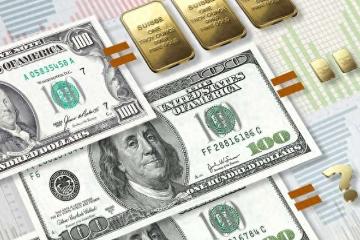A Bull Market for Dollar Bonds Ahead!
Advertisements
In recent years, the landscape of fixed income investments has seen remarkable changes, particularly in the realm of US dollar-denominated bondsThese financial instruments, which include U.STreasury bonds and investment-grade dollar bonds from Chinese enterprises, present investors with significant opportunities for returns, especially as we look toward 2024. This year, we can reliably speak about these instruments as a cornerstone for capital allocation, particularly under the backdrop of a potential shift in monetary policy by the Federal Reserve.
Firstly, integrating dollar bonds into one's investment portfolio can be likened to completing a jigsaw puzzle, where each piece contributes to a more comprehensive picture of an investor's strategyThe dollar bond market is fundamentally characterized by its ability to attract international capital across a wide array of issuers, including governments, financial institutions, and corporations
Advertisements
This multi-faceted nature augments the utility of dollar bonds in providing a diverse funding channelNotably, Chinese dollar bonds, which leverage the credit of Chinese enterprises while being issued offshore and priced in U.Sdollars, have gained increased attention from global investors seeking exposure to Chinese markets without direct risks associated with local currency.
Investing in dollar bonds serves dual purposesOn the one hand, it enriches an asset allocation strategy, allowing investors to balance their portfolios with both RMB-denominated assets and dollar-denominated assetsThe rationale here is simple: the dynamics of currency and bond markets can often move in opposite directions, thereby allowing for risk mitigation through diversificationFor instance, historical data show that the annual returns of certain Chinese dollar bonds exhibit inverse correlation patterns with domestic bond yields
Advertisements
Consequently, this feature can act as a stabilizing mechanism for long-term investors.
Let's dive a little deeper into the numbersBetween 2006 and 2022, the median annual return of a broad index of Chinese bonds stood at around 3.31%, with 82% of the years delivering positive returnsBy introducing a mix of 80% Chinese bonds and 20% Chinese dollar bonds into this portfolio, the median annual return increases to an impressive 4.12%, significantly enhancing the likelihood of positive returns to 94%. Such statistics are crucial for investors looking to grasp the benefits of diversified investment strategies.
Moreover, the dollar bond market is colossal, being one of the most active debt markets globally, boasting a total market capitalization of somewhere between $60 trillion to $70 trillionThis figure dwarfs the cumulative market cap of all companies listed on U.Sexchanges, showcasing the market's depth and its efficiency in capital allocation
Advertisements
It presents an indispensable opportunity for investors who require liquidity alongside a desire for risk diversification.
Looking at returns between 2010 and 2020, we see that investment-grade and high-yield Chinese dollar bonds provide average returns of 5.2% and 9.4%, respectivelySuch returns far exceed what the domestic bond market offers, coupled with volatility figures of 4.3% and 12.3%. Even during the U.SFederal Reserve's tightening phase between 2015 to 2018, these bonds have maintained relatively strong positive returns.
Overall, investor sentiment towards dollar bonds is fortified for those who have already engaged in either domestic equities or bonds, as they aim to enhance the safety net of their asset allocations through international fixed-income securitiesIn essence, for many, investing in dollar bonds serves as the "final piece" of a diversified investment puzzle.
Next, examining the historical context, each rate cut by the Federal Reserve has historically been a trigger for increased opportunities in dollar bond investments
- Promoting Safe and Orderly Development of Nuclear Energy
- Nvidia Loses $240B in Market Value Overnight
- U.S. JOLTS Job Openings Exceed Expectations
- Elevating the Full Chain of China's Automotive Industry
- Anthropic Seeks $2B at $60B Valuation
An analysis of three rate-cut cycles since 2000 reveals that U.STreasury bonds yielded an average of around 5%, with all returns being positive—a testament to their resilience irrespective of broader economic trends.
Currently, the U.STreasury market seems poised for further growthFollowing the notable market shifts since November, the prevailing anticipation is that the Fed will begin cutting rates, resulting in an uptick in Treasury pricesWhile the market has seen some rapid movements, prices remain relatively low, suggesting a considerable upside potential.
The yields from U.Sbonds can be segmented into two primary components: the appreciation in bond prices as rates decline, and the interest income from coupon paymentsWith diminishing interest rate forecasts—evident from the Federal Reserve’s dot plot, which indicates a peak in the federal funds rate—investors can expect a favorable environment for bond price appreciation

The general expectation sets the median policy rate at approximately 4.6% for 2024, allowing investors to benefit from price lifts alongside securing one's position with attractive coupon rates.
It is also critical to mention that obtaining exposure to global credit bonds can be challenging due to substantial investment thresholds—often set at around $200,000 for individual transactionsHowever, for individual investors, participating in this space can be simplified through Qualified Domestic Institutional Investor (QDII) bond funds, which provide a less capital-intensive avenue for access to dollar bonds and Asian credit markets.
As we transition into the investment landscape of 2024, the prevailing macroeconomic conditions are set to shift from a robust U.Seconomy with stringent monetary policies to one characterized by slower growth and a corresponding easing of Fed policies
Leave A Reply